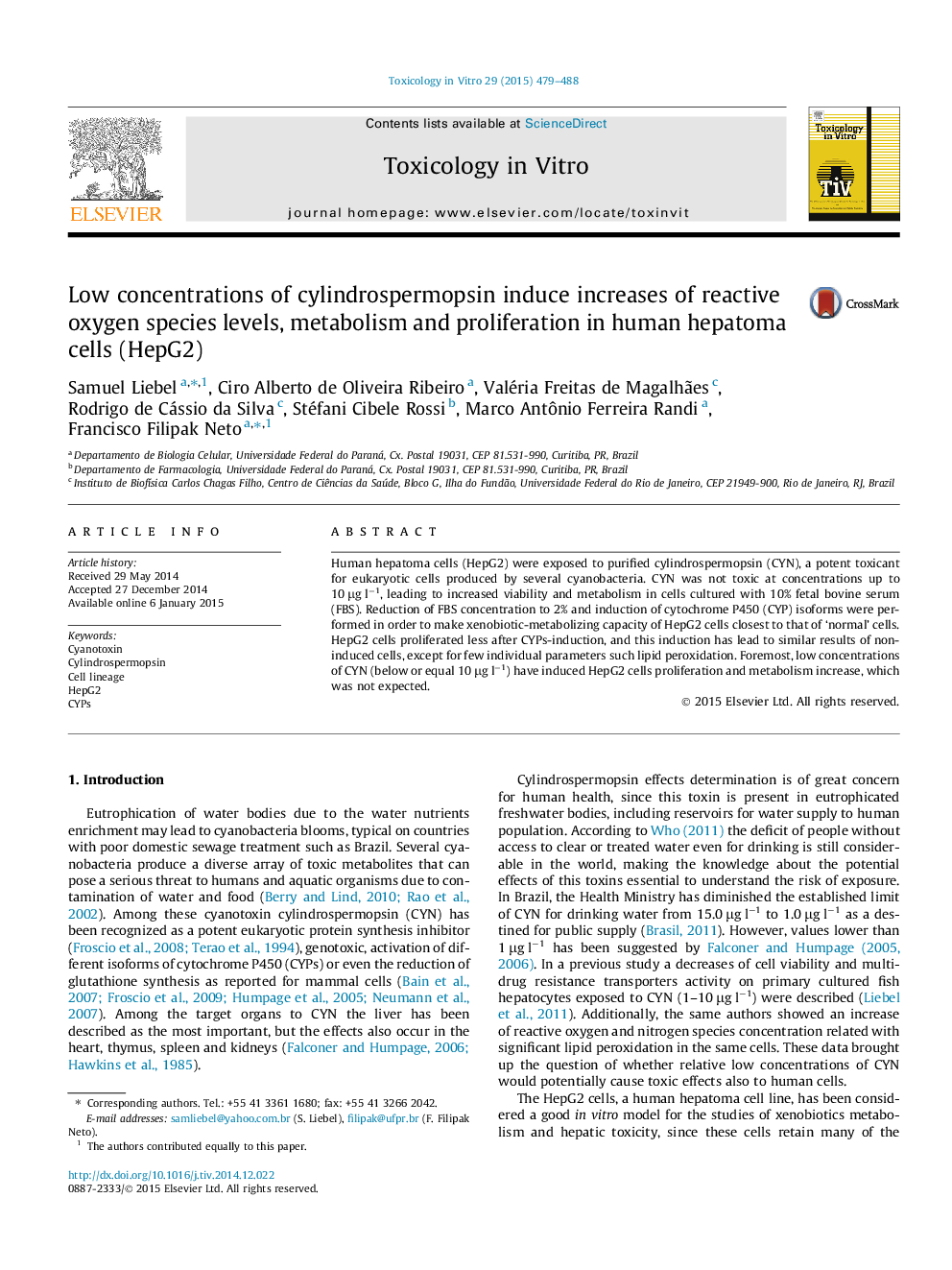| Article ID | Journal | Published Year | Pages | File Type |
|---|---|---|---|---|
| 2602483 | Toxicology in Vitro | 2015 | 10 Pages |
•Low concentrations of CYN (<10 μg l−1) produced limited toxicity in HepG2 cells.•Pre-induction of CYPs slightly increased CYN toxicity.•Low concentrations of CYN led to increases of HepG2 metabolism and proliferation.•CYN-induced proliferation seems to depend on ROS signaling.•Culture medium with 2% FBS may be appropriate for experiments with HepG2 cells.
Human hepatoma cells (HepG2) were exposed to purified cylindrospermopsin (CYN), a potent toxicant for eukaryotic cells produced by several cyanobacteria. CYN was not toxic at concentrations up to 10 μg l−1, leading to increased viability and metabolism in cells cultured with 10% fetal bovine serum (FBS). Reduction of FBS concentration to 2% and induction of cytochrome P450 (CYP) isoforms were performed in order to make xenobiotic-metabolizing capacity of HepG2 cells closest to that of ‘normal’ cells. HepG2 cells proliferated less after CYPs-induction, and this induction has lead to similar results of non-induced cells, except for few individual parameters such lipid peroxidation. Foremost, low concentrations of CYN (below or equal 10 μg l−1) have induced HepG2 cells proliferation and metabolism increase, which was not expected.
